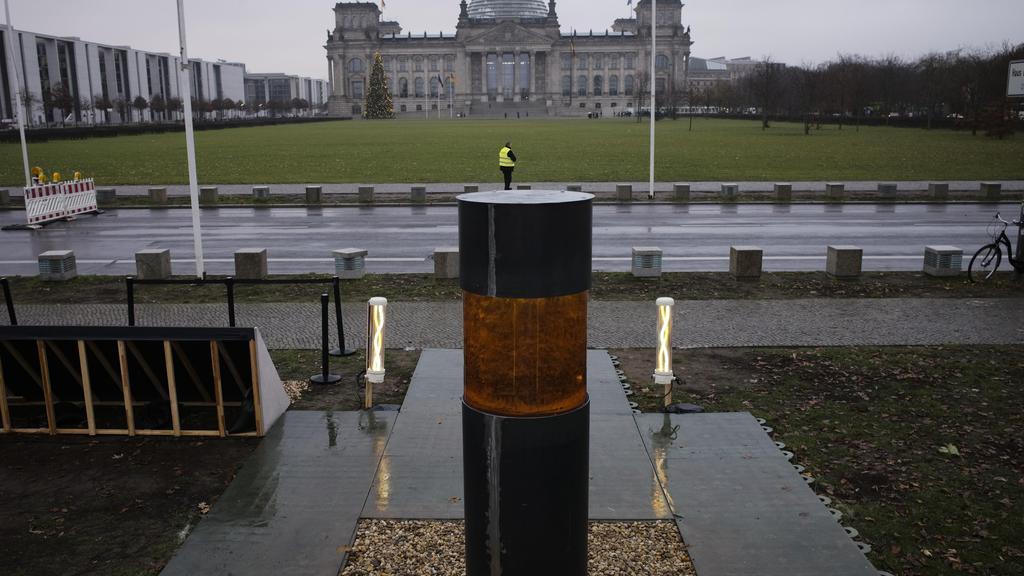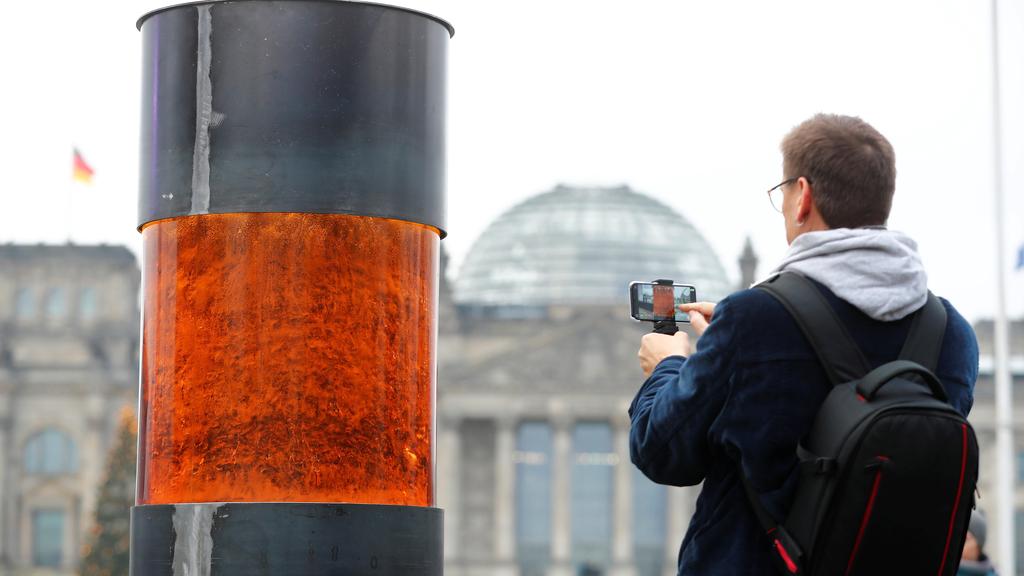Getting your Trinity Audio player ready...
Jewish groups expressed outrage on Tuesday at an oversized urn placed in front of the German parliament that those behind it claim contains Holocaust victims' remains and is meant to highlight the dangers of far-right extremism.
The International Auschwitz Committee condemned the action by the Center for Political Beauty, which unveiled the urn near the Reichstag building Monday, calling it a "pillar of resistance."
2 View gallery


Urn placed in front of the German parliament that those behind it claim contains Holocaust victims
(Photo: AP)
"Auschwitz survivors are aghast at this installation, which hurts their feelings and the eternal peace of the dead of their murdered relatives," the organization said.
The Center for Political Beauty, a Germany-based activist group known for provocative stunts, said the urn contained victims' remains that it had unearthed from 23 locations near Nazi death and concentration camps in Germany, Poland and Ukraine. Soil the group said contained the remains could be seen in the transparent orange urn, which is about the size of an oil drum, set atop a metal pillar.
The group defended its installation, saying it did not open any gravesites. "We only looked for earth-covered human remains that were hidden by the Nazis in the surroundings of the former death camps."
The group, whose members consider themselves political artists, said its actions aim to show that in Germany "the legacy of the Holocaust is rendered void by political apathy, the rejection of refugees and cowardice."
The urn serves as a warning in times of growing far-right extremism of how conservative forces in Germany helped pave the way for Adolf Hitler's fascists to come to power in 1933, the group said.
Six million European Jews were murdered by the Nazis, many of them transported from around Europe to be killed in the death camps like Auschwitz, Sobibor and Treblinka that the Germans established in occupied Poland.
"Some of the survivors told me: 'My beloved family members were carted so much across Europe during the deportations - why can't they just be left in peace now?" Christoph Heubner from the Auschwitz Committee said.
Poland's chief rabbi, Michael Schudrich, said moving the remains of the dead is forbidden according to Jewish law.
"The human remains of Holocaust victims are especially holy and require the greatest care and sensitivity," Schudrich said. "According to Jewish tradition, they should remain in their original grave and certainly should not be used for any other purpose, even a purpose which some may think is worthy."
Germany's leading Jewish group, the Central Council of Jews, said that while it welcomed political action against far-right extremism, even in provocative ways, the latest stunt by the Center for Political Beauty was "problematic."
"If the ashes are indeed from Shoah victims, then the peace of the dead was disturbed," the council's president, Josef Schuster, said.
"It would therefore be welcome if during the dismantling of the resistance pillars the advice of a rabbi would be considered to at least ensure a respectful ... handling of the ashes."
2 View gallery


Urn placed in front of the German parliament that those behind it claim contains Holocaust victims
(Photo: Reuters)
It isn't the first time the activists have irritated Jewish groups with their installations. Two years ago, they erected a Holocaust memorial outside the home of a nationalist politician who suggested Germany should end the decades-long tradition of acknowledging and atoning for its Nazi past. Critics said the memorial was about political activism and not about the victims of the Holocaust.
On Tuesday morning, police examined the urn near the Reichstag building and took photos after receiving complaints.
Julien Sauter, a 17-year-old student who was on a school trip to Berlin with his high school class from Stuttgart, dismissed the notion of the urn as a legitimate art installation.
"You can't excuse everything by calling it art," Sauter said. "Especially not when it's such a sensitive topic."

